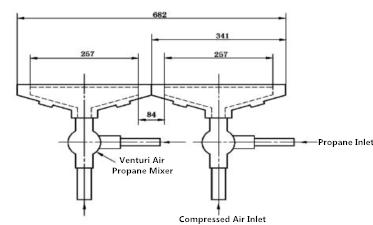Innovative Techniques in Precision Measurement with Optical Instruments for Enhanced Accuracy
Optical Measuring Instruments The Key to Precision and Accuracy in Measurement
Optical measuring instruments have revolutionized the field of measurement, providing exceptional precision and accuracy across various industries. These sophisticated tools utilize the principles of optics to measure dimensions, angles, and other physical properties of objects with remarkable effectiveness. From manufacturing to healthcare, the ability to measure with high fidelity is crucial for quality control, research, and development.
One of the most common types of optical measuring instruments is the optical micrometer. This device employs a beam of light to measure small distances with extreme precision, often down to the micrometer level. Optical micrometers are widely used in manufacturing for inspecting components in the automotive and aerospace industries, where even the slightest deviation in measurements can lead to significant safety hazards.
In addition to measuring small dimensions, optical measuring instruments include tools like laser interferometers. These employ the interference of light waves to measure distances with unparalleled accuracy. By comparing the wavelengths of laser light, interferometers can detect changes as small as a fraction of a wavelength, making them essential in applications such as fiber optics, semiconductor manufacturing, and global positioning systems. Their capacity to measure distances with such high precision has made them invaluable in research laboratories and industrial settings alike.
optical measuring instrument

Another notable optical measuring device is the profile projector, also known as an optical comparator. This instrument projects a magnified silhouette of an object onto a screen, allowing for detailed analysis of its shape and dimensions. Operators can measure angles, radii, and other features by overlaying a grid or using calipers on the image. Profile projectors are popular in quality control processes, as they assist engineers in ensuring that products adhere to strict specifications without requiring direct physical contact.
The utilization of optical measuring instruments is not limited to traditional manufacturing sectors. In the medical field, optical coherence tomography (OCT) is increasingly employed for non-invasive imaging of biological tissues. This technology uses light waves to capture high-resolution cross-sectional images, aiding in the diagnosis and monitoring of various medical conditions, particularly in ophthalmology for assessing retinal diseases. The precision of optical measurement in medical diagnostics enhances the quality of patient care and fosters advancements in treatment methods.
Furthermore, the integration of advanced technology with optical instruments has led to the development of digital measurement systems. These systems can automate data collection and processing, significantly reducing human error and increasing efficiency in measurement tasks. With the advent of artificial intelligence and machine learning, future optical measuring instruments will likely enhance their accuracy and capabilities, combining predictive analytics with traditional measurement techniques.
In conclusion, optical measuring instruments play a pivotal role in modern measurement applications, offering unmatched precision, versatility, and non-contact methods of measurement. Their significance spans multiple industries, including manufacturing, healthcare, and scientific research. As technology progresses, the evolution of optical measuring instruments will continue to shape how we understand and interact with the world around us, driving innovation and maintaining the highest standards of quality and safety. With ongoing advancements, we can expect these instruments to become even more integral to our daily operations, further enhancing our ability to quantify and analyze the intricacies of our environment.
-
Why the Conductor Resistance Constant Temperature Measurement Machine Redefines Precision
NewsJun.20,2025
-
Reliable Testing Starts Here: Why the High Insulation Resistance Measuring Instrument Is a Must-Have
NewsJun.20,2025
-
Flexible Cable Flexing Test Equipment: The Precision Standard for Cable Durability and Performance Testing
NewsJun.20,2025
-
Digital Measurement Projector: Precision Visualization for Modern Manufacturing
NewsJun.20,2025
-
Computer Control Electronic Tensile Tester: Precision and Power for the Modern Metal Industry
NewsJun.20,2025
-
Cable Spark Tester: Your Ultimate Insulation Assurance for Wire and Cable Testing
NewsJun.20,2025
 Copyright © 2025 Hebei Fangyuan Instrument & Equipment Co.,Ltd. All Rights Reserved. Sitemap | Privacy Policy
Copyright © 2025 Hebei Fangyuan Instrument & Equipment Co.,Ltd. All Rights Reserved. Sitemap | Privacy Policy
